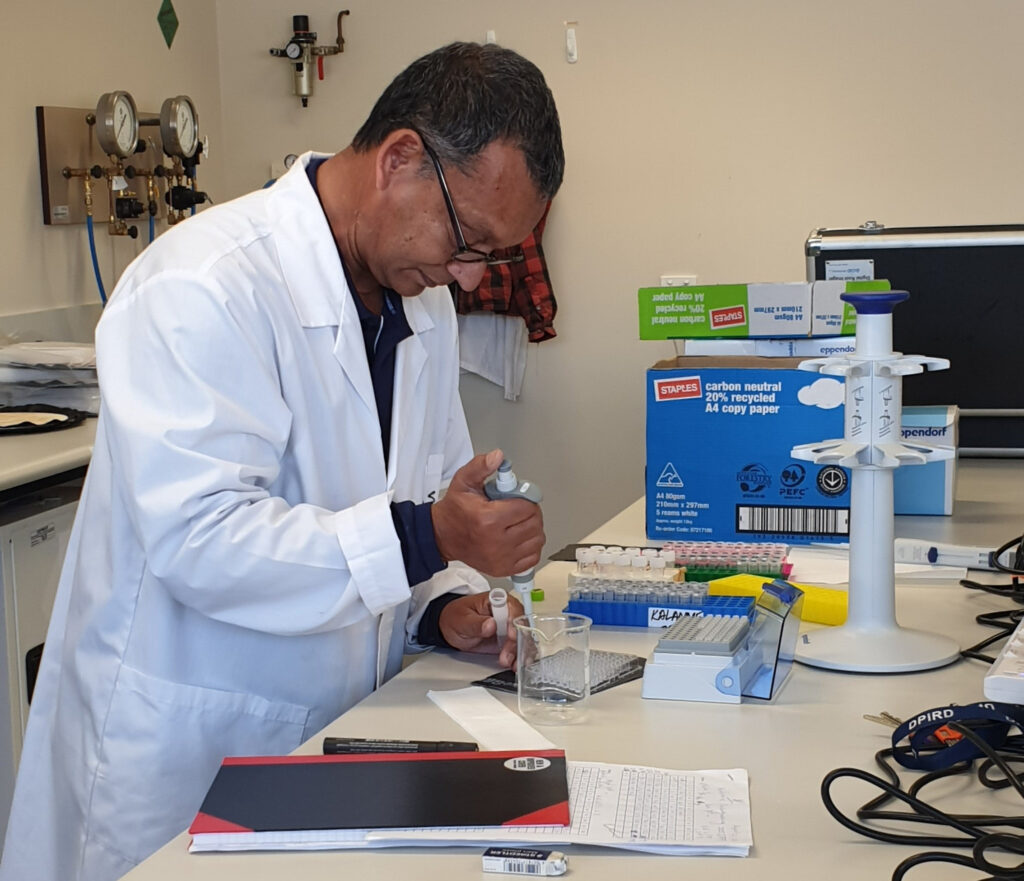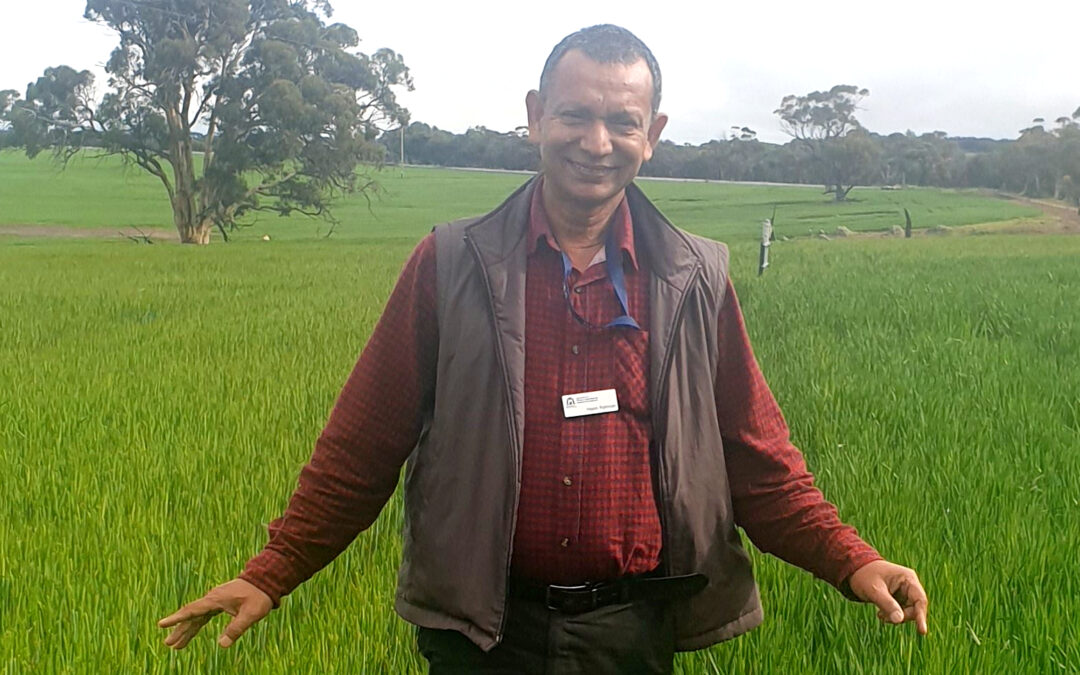Summary
In calcareous soils, boron concentration is often at toxic levels affecting crop development and grain yield, however recent research has highlighted the potential use of on-farm acidic sand as an ameliorant to detoxify subsoil boron.
The research was presented at the GRDC Research Update in Perth on February 28.
Background
Calcareous soils are often constrained by multiple interacting soil constraints including high pH, compaction, poor structure, slow water infiltration, and low plant available water. While the application of soil amendments, such as gypsum, has been proven to decrease soil pH and improve soil structure when applied at a very high rate, it is not an economically viable option. Therefore, an alternative amendment which has the potential to decrease soil pH, improve soil structure, soil water infiltration and plant available water has been on the wish list of growers.
While boron is an essential nutrient for plant growth, an excessive amount of boron uptake can be toxic for crop plants. In texture contrast and loamy soils with high pH (alkaline) and heavy sodic subsoils, boron concentration in the soil can be as high as 130 mg/kg and this high level of soil boron can cause toxic symptoms for most grain crops across WA.
About the research / researcher
An incubation study was conducted by DPIRD research scientist Dr Hasinur Rahman and his team to decrease soil pH, electrical conductivity and boron concentration and increase plant available water in calcareous-saline-alkaline heavy soils through the incorporation of acidic and neutral sands.
Acidic sand is a natural resource which potentially could be used to improve soil physical properties and detoxify boron concentration in soils. The effects of acidic sand to reduce boron toxicity had not been tested on WA soils and the incorporation of acidic sand to calcareous clays on plant available water were also poorly understood.

Trial / location details
Soil samples were taken in collaboration with Dr Gaus Azam’s extensive soil re-engineering trial.
Calcareous subsoil clays were collected from 50 – 80 centimetre depth from re-engineering sites at Carnamah, Bonnie Rock, Holt Rock and Salmon Gums, with acidic sands (pHCa 3.78-4.04) collected from a nearby paddock of first three sites and a neutral pH sand (pHCa 6.56) collected from Salmon Gums because no acidic sand was available at this locality.
These acid and neutral sands were also used in the field reengineering experiments.
Benefit to growers
Irrespective of soil types, the incorporation of acidic sand improved soil constraints such as pH, electrical conductivity, boron concentration and plant available water. Increasing rates of incorporation of acid sand decreased soil pH and consequently decreased boron concentration exponentially at the Carnamah, Bonnie Rock and Holt Rock sites. The increase in plant available was significant for all soils but particularly at Carnamah which had the largest improvement.
The incorporation of naturally occurring local acid sand could be an effective soil amendment to reengineer saline-sodic-alkaline soils for reducing alkalinity and boron toxicity, as well as increasing plant available water.
Further work to understand the nutrient release, the longevity of this effect in field conditions and practical ways of incorporation of sand into deep sodic-saline-alkaline soil is needed. However, the experimental results will help in decision making while adopting reengineering treatments for calcareous and boron toxic heavy soils.
Funding partners
Department of Primary Industries and Regional Development (DPIRD) and the Grains Research and Development Corporation (GRDC).
Project name and code
Re-engineering soils to improve the access of crop root systems to water and nutrients stored in the subsoil.
GRDC project code: DAW1902_003RTX.
Contact
Dr Hasin Rahman
DPIRD Research Scientist
Hasinur.Rahman@dpird.wa.gov.au
0436 190 141
Dr Gaus Azam
DPIRD Research Scientist
0472 831 809

